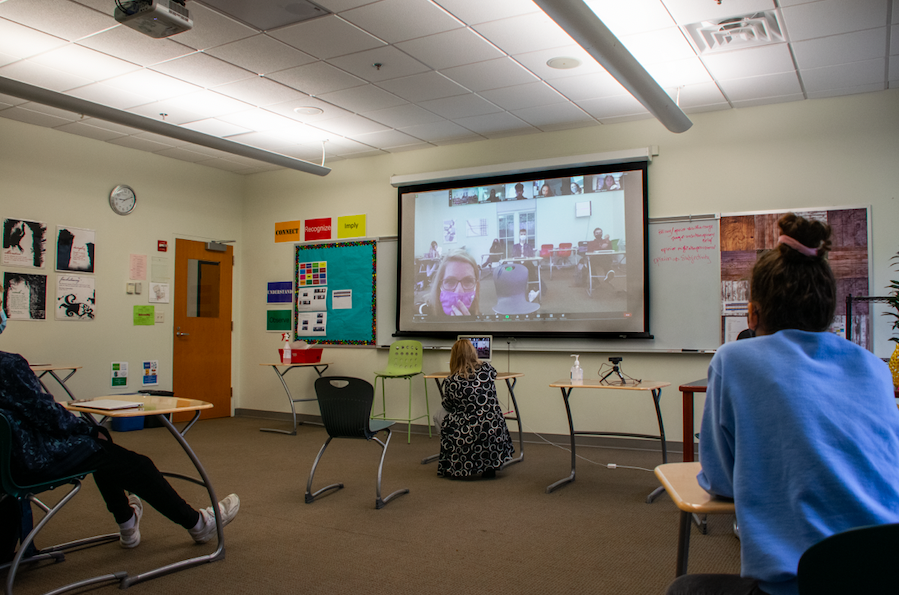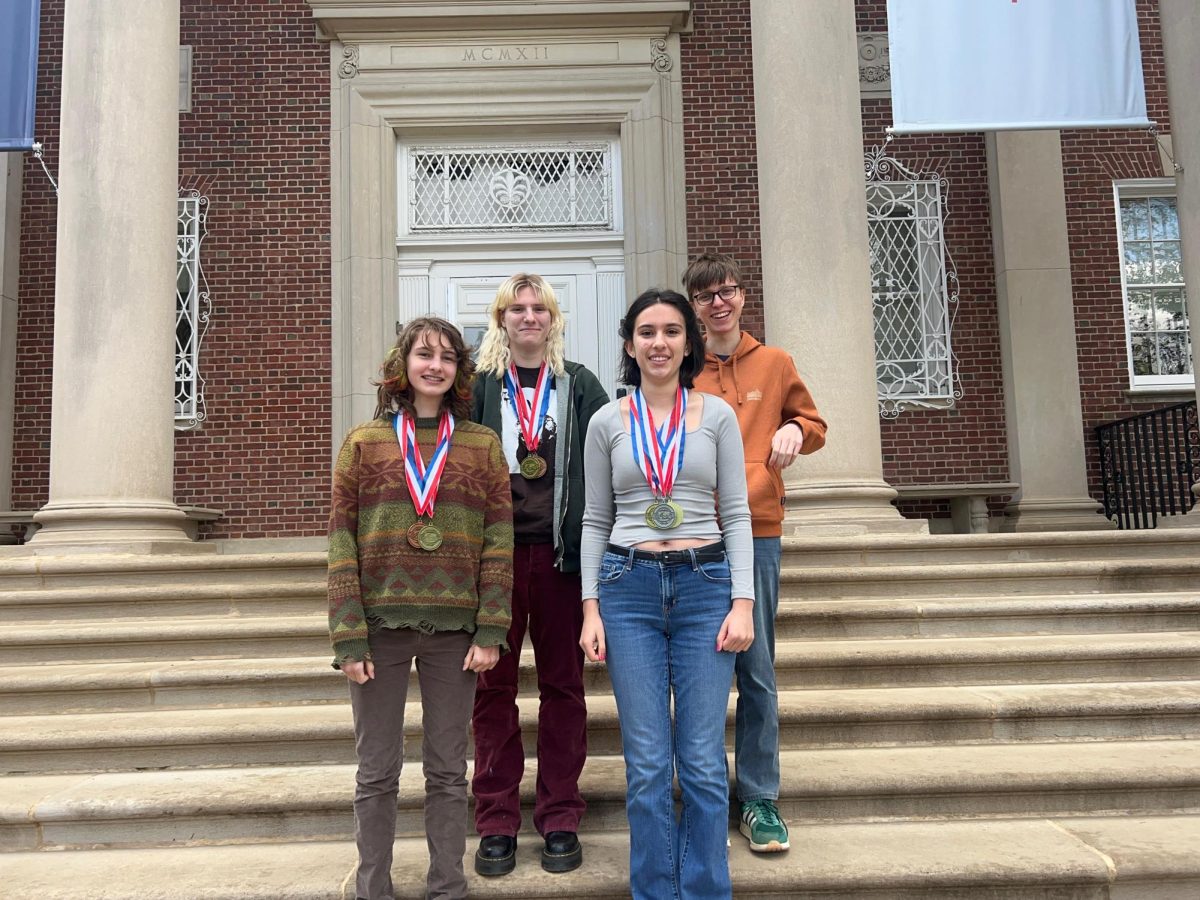When WIS pivoted into hybrid learning in early October, students and teachers adapted to new forms of instruction. In-person learning is now an added benefit, but balance between in-person students and students tuning in on Zoom is a major obstacle the WIS community has faced.
Going into hybrid learning, teachers planned on how to adjust their classes. Some choose to use breakout rooms or platforms for discussions; Others treat it as a live classroom. However, teachers need to act with various things in mind to facilitate the learning experience for at-home students. r
“You have to be conscious that you’re within view of the camera, that you can’t roam around the classroom or roam off the camera. And just the fact that if you get too far away from the microphone, the people at home can’t hear you,” Michael Jollimore, upper school physics and chemistry teacher, said.
Discussion-based classes, such as language and humanities classes, particularly struggle with audio as it becomes more difficult to hear students in class. Teachers like Susan Chung have shifted away from typical discussions to digital platforms like Flipgrid and Padlet which allow her to create a similar experience as she would before.
“I love doing visual colorful and critical projects in the classroom with markers, and we can’t really do group work like we used to. Padlet is a way for people to collaborate and interact with each other while being creative and analyzing or expressing ideas,” Chung said.
However, some teachers have found ways to retain the discussion component of their classes for at-home students.
“[Economics and TOK teacher Guy Neal] has done a really great job. He has been using breakout rooms, and I think that’s the added benefit to TOK class since it’s pretty large, but he’s been able to let the kids at home into small breakout groups, and at school, they discuss too,” a junior who has only recently returned to school, Ana Diaz-Young said.
In instrumental classes, audio issues are particularly challenging because students at home need to follow along with people playing in class.
“I felt like it was kind of hard to follow what was going on because it was outdoors and the audio wasn’t great. It was just really hard to stay with the band,” a senior who’s remained home during hybrid, David Allen said.
On top of audio, instrumental is more difficult because of the safety issues it poses. The instrumental teacher, Joshua Frayer, has decided to hold classes outside and spend part of the program’s budget on special masks for specific instruments.
“You can’t play an instrument, a wind instrument, with a mask on the way you can with percussion. But playing a saxophone, you have to use your air, you have to blow through the instrument. So that’s some of the things that I’ve come up with,” Frayer said.
Additionally, P.E. is independent fitness for at home students, like what was done in distance. However, in person, the P.E. department has had to adapt to the hybrid model. Mindfulness activities were added to the last 10 minutes of class and outside activities have been prioritized as much as possible. Some activities implemented have been nature walks learning about the history of the Klingle Trail.
“It’s been a shift trying to keep students from sharing equipment, because the natural tendency is ‘there’s a ball out on the field, we want to pick it up, we want to play’,” P.E. teacher Nicole Coviello said.
Labs in science classes have had to utilize demos and video analysis, giving students a chance to develop data analysis skills.
“They’ve literally seen me making the measurements, and I put the camera on the device, so they can actually make the measurements themselves, but it’s me manipulating the materials,” Jollimore said.
Overall, balancing both cohorts and being flexible are the most important priorities for teachers. For Allen, classes don’t seem too different, especially with the vast majority of seniors staying home.
“I can’t speak for how the people who are there feel but it still feels like the classes are on Zoom,” Allen said.
Diaz-Young finds that in her discussion-based classes she struggles more. Her Physics class with Tony Godwin, though, is a lot better. However, she did return to school because of the disparity between online and in-person.
“He said ‘it’s gonna be exactly the same. I’m just gonna have an audience.’ I think that’s a really good method, especially for people at home,” Diaz-Young said.
For students and teachers alike, hybrid is difficult. But according to Chung, the hybrid model needs patience and adaptability.
“You have to just constantly adjust and be flexible because you think something’s gonna take five minutes, and literally, in my ninth grade class it took 20 minutes,” Chung said.
Additional reporting by Saul Pink ‘21


































































